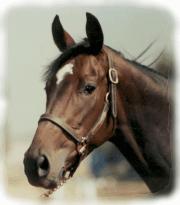
A Horse, of Course with Don Blazer |

If you enjoy learning about horses, then you'll love our Community College online
Personal Enrichment courses. Each month you'll find a new column on our web site. We hope you'll enjoy it, and maybe e-mail us with questions or suggestions for other columns. A Horse, Of Course is a monthly column syndicated by Success Is Easy. If you like the column, call your local newspaper, or local horse publication and ask them to subscribe by contacting Success Is Easy. |
There may be more people driving carriages
today than there were in the late 1800s….if not, one thing is certain---they're
having more fun! Driving classes and carriage driving competitions are becoming more and more popular at a rate even chuck wagon races can't match. It all started with the invention of the wheel, which was a real blessing from the horse's point of view. It made pulling carriages and every other conceivable conveyance a lot easier. Exactly when the wheel was invented is a controversy of little consequence--unless you happen to have been a horse. There is evidence chariot racing began nearly 9,000 years ago. At the same time, there is data supporting the belief that the wheel was invented only 5,000 years ago. If the latter date is correct, that would mean for nearly 4,000 years those poor chariot horses were pulling wheel-less wagons. What a drag! In any case, things seemed to come together quite well. The Chinese developed the horse collar, which made it possible to use horsepower for transportation. (Let's get this fact out of the way right now-horses don't pull things, they push…..they push into the collar and in that way, pull the wagon.) The Romans invented the iron horse shoe that enabled the horse to travel over any terrain and for great distances without getting sore feet. And the Greeks invented the snaffle bit, which had many driving advantages over other early control devices. With all these inventions, the mass transport business was rolling. The first mass transit system was the English stagecoach of 1635. The first American stage line was established between New York and Albany in 1785. But the golden age of the stage was around 1850, with the running of the Pioneer Line from St. Louis, Missouri to Sacramento, California, a distance of 2,500 miles. It cost passengers $200 to ride the stage and the journey took 70 days from point to point. Naturally mass transit then, as now, was necessary, but unpopular. Everyone, then as now, wanted to go when and where they wanted when they felt like it and in the style that suited them best. Up sprang a new industry. Carriages! (The word has been shorted to "car".) Carriages were designed to display the owner's taste, social position, wealth, sporting flair, or for simple utility. (The carriage commercial hasn't changed in 300 years.) The basic carriage is the two-wheeled cart, upon which the driver (often called "the whip") sits directly between the wheels. The cart is a utility vehicle, uncomfortable and unstylish. A step up is the two-wheeled jogging cart, and then there is the "governess" which is a bit more elaborate and principally used to amuse children-so it was designed to be nearly indestructible. Superior two-wheeled vehicles are gigs, considered quite sporty and can be driven with two horses in tandem, one horse is front of the other. Tandem driving, I'm told, is quite difficult. At the bottom of the four-wheeled buggy line are buckboards and runabouts. The buggy can have a fixed top, folding top or no top, and it is normally a one-horse vehicle. Phaetons have a lot more class than a buggy and have folding tops and lamps. Usually Phaetons are owner driven, but some had a seat for a groom. The Phaeton was light enough to be pulled by a single horse, but if the owner wanted to show off, he'd use a "matched pair of horses." A surrey (named for the Earl of Surrey) is not considered a fancy carriage unless it is adorned with fringe on the top. A light, four passenger carriage, the surrey had fenders and was used for picnicking or going to church. For true elegance, the Brougham is hard to beat. This is a four-passenger coach always driven by a coachman and used only to take its occupants to dignified and formal events. If you still think having a classic car is "cool," your social stature is zip. Nothing enhances your image and social standing quite as much as taking friends for a spin around the family estate in your "Brougham." "On, James." |